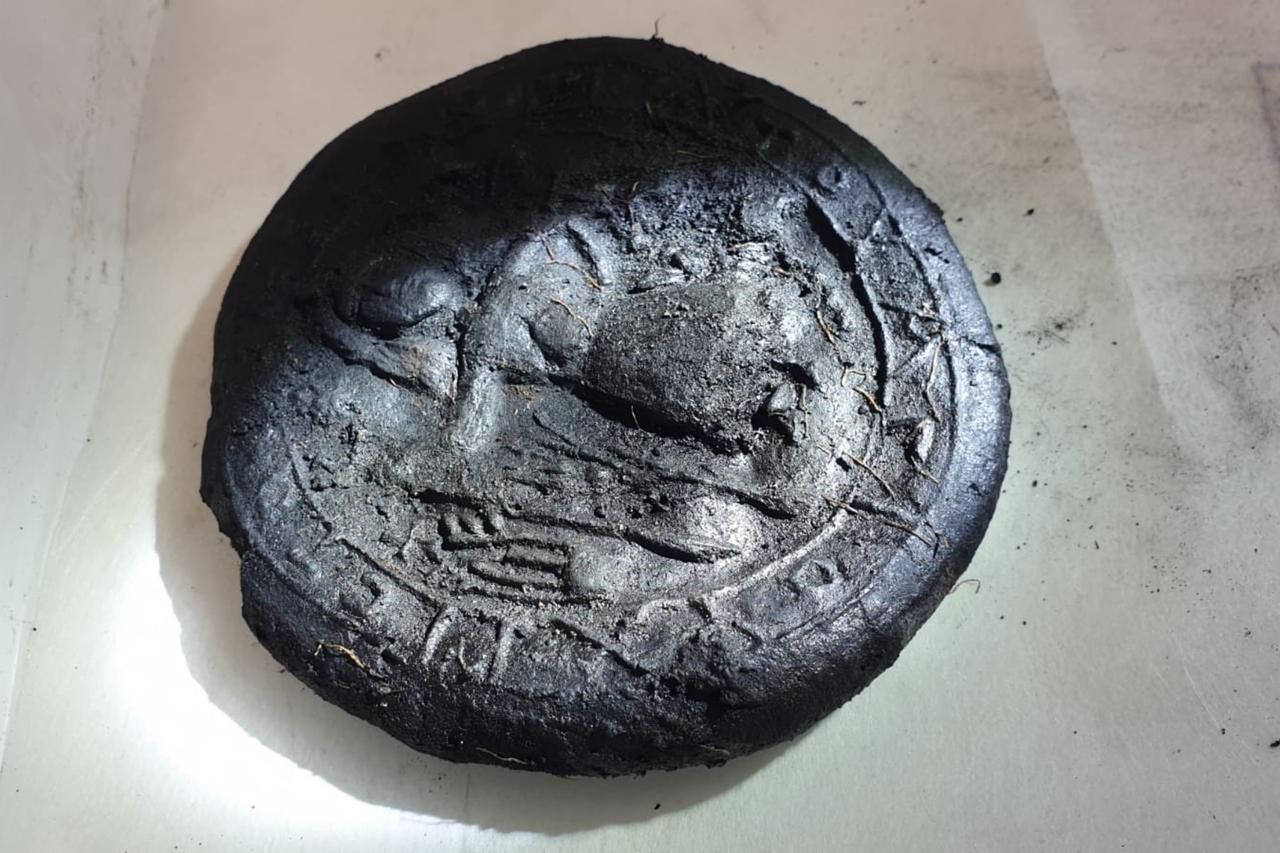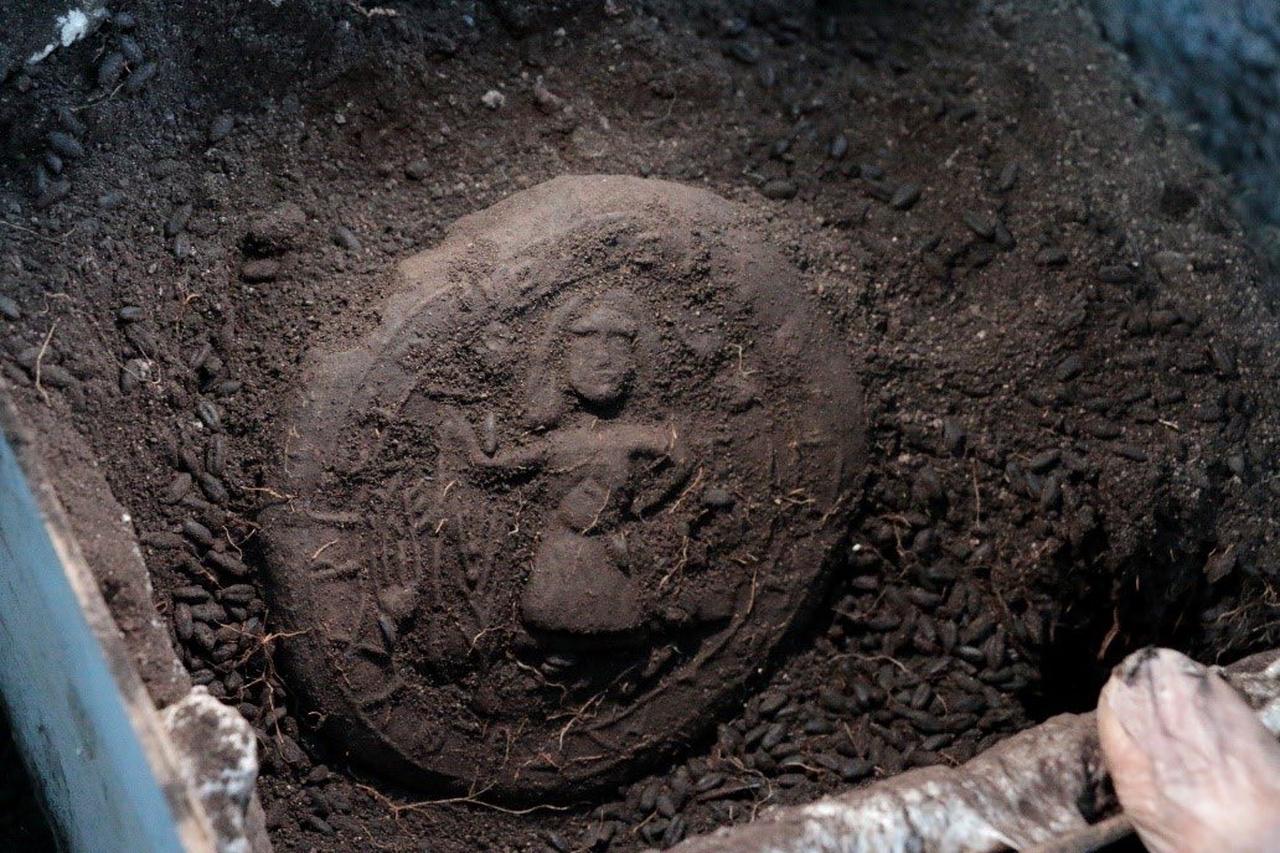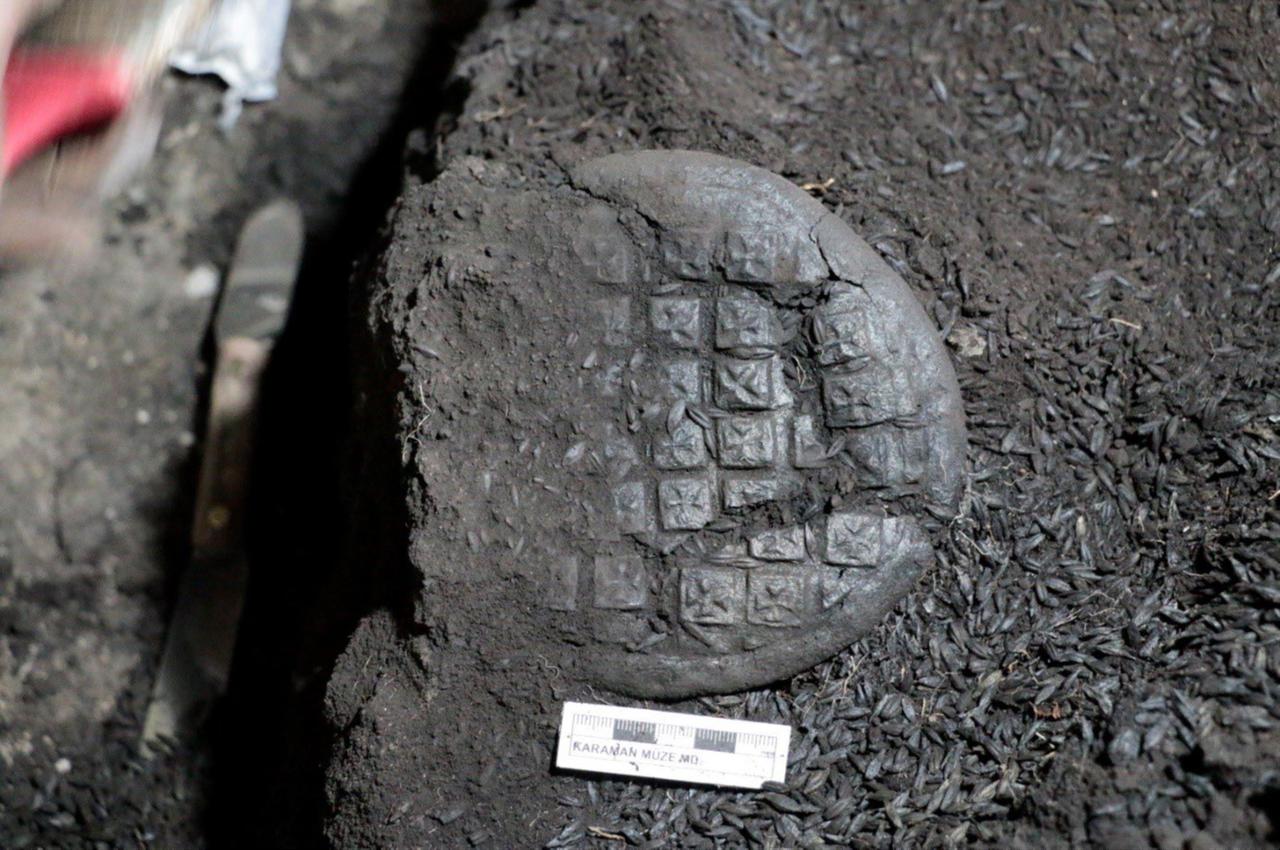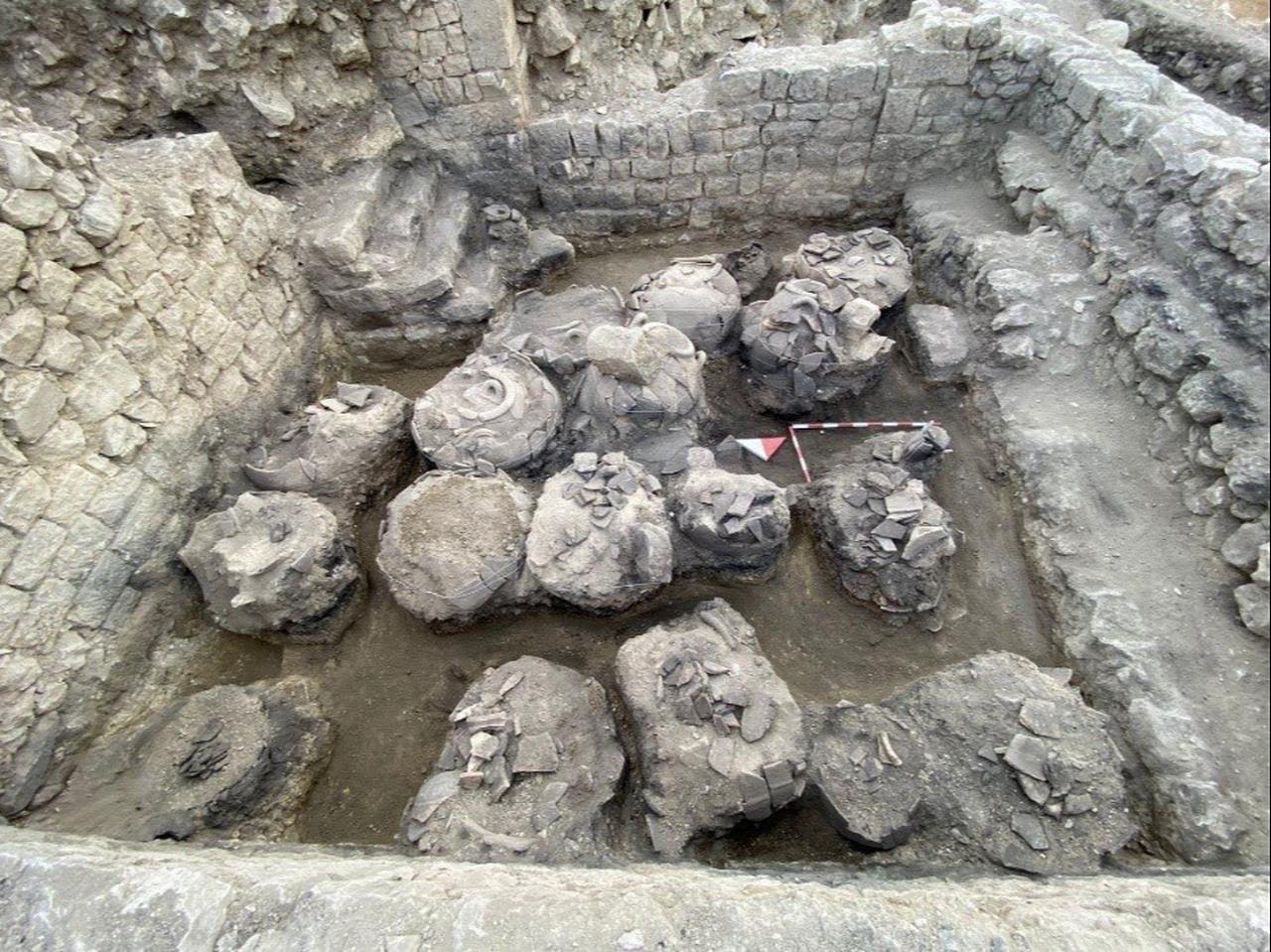
Archaeologists in Karaman's Topraktepe (ancient Eirenopolis) have unearthed five carbonized loaves, dated to the seventh to eighth centuries A.D.
According to the Karaman Governorship, the breads—among the best-preserved of their kind in Anatolia—were made with barley flour and decorated, opening a window onto everyday diet while also shedding light on practices tied to Christian liturgy in early medieval Anatolia.

One loaf stands out for its unique iconography. Researchers report a depiction that evokes a farming context, describing an “Sower/Farmer Jesus,” distinct from standard “Savior (Pantokrator) Jesus” molds.
A Greek inscription alongside the image reads: “With our gratitude to Blessed Jesus.” Specialists note that the motif points to symbolic themes of bounty, labor, and sustenance that shaped the piety of the period.

The remaining four loaves bear stamped decorations in the form of a Maltese Cross.
Based on the cross marks and the dedication to Prophet Jesus (pbuh) appearing together, investigators assess that these stamped breads could be linked to “Eucharist/Communion bread” (prosphora) used in early Christian rites. Interdisciplinary analyses are ongoing to clarify their precise function.

The loaves survived thanks to carbonization caused by fire or high heat. Under low-oxygen heating, organic matter can turn to charcoal and keep its shape.
Here, both the dough forms and the stamp details remain clearly visible, which the Karaman Governorship says makes the set a rare reference collection for Anatolia.
Work at the site proceeds under permits from the Ministry of Culture and Tourism’s General Directorate of Cultural Heritage and Museums, led by Karaman Museum with Museum Director Ercan Er serving as head of excavations.
With layers spanning Late Antiquity to the Middle Ages, Topraktepe/Eirenopolis offers a place to read church-city structures alongside rural production and consumption.
Recent finds across Anatolia continue to fill out the long history of grain processing and bakery traditions: bread from Konya Catalhoyuk, dated to about 8,600 years ago, bread residues from Eskisehir Kulluoba around 5,000 years old, and chickpeas from Kutahya Tavsanli Hoyuk about 4,000 years old.
Topraktepe’s stamped, iconographic loaves add a distinctive early Christian/early medieval link in this chain.